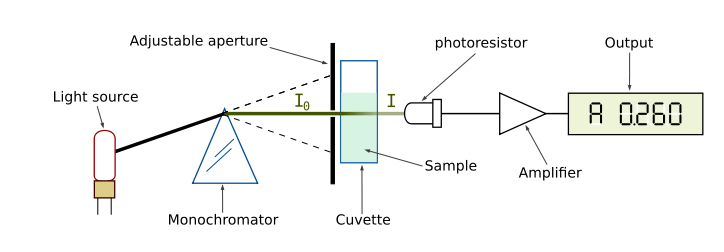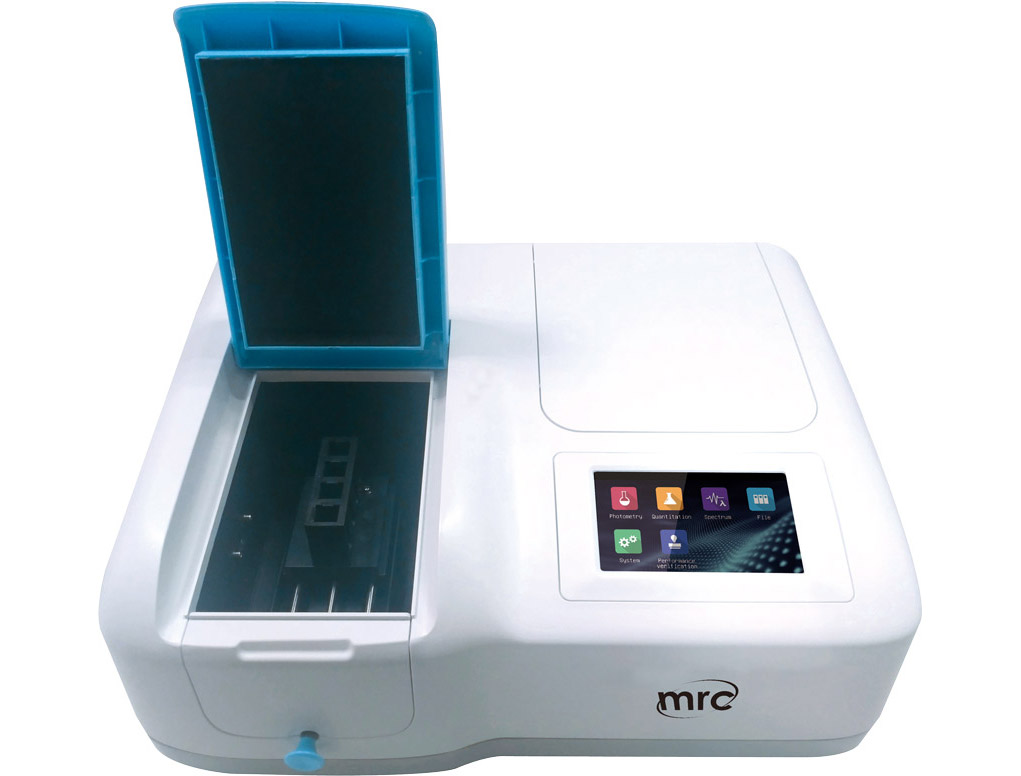Over what wavelength range would you like to measure samples?
SPECTROPHOTOMETERS

UV/Visible
Often abbreviated to UV/Vis or UV-Vis. UV/Visible spectroscopy offers maximum flexibility and is suitable for applications in the wavelength range of 190 to 1100nm. In UV/Visible spectroscopy the UV region is considered to be any wavelength less than 340nm. Nucleic acid, purified proteins, and other organic molecules are often measured in the UV region.
Visible
Often abbreviated to Vis. Visible spectrophotometers and colorimeters typically measure in the visible region of the electromagnetic spectrum (340-750nm). If your samples are colored this is an indication that they will absorb visible light. If you do not need to measure in the UV region (<340nm) a visible spectrophotometer or colorimeter may be a more economical alternative.
MRC's spectrophotometers UV/vis, vis with many options like Kinetics, Scanning, DNA protein Multi wavelengths, etc.
Single Beam Spectrophotometer: SPECTROPHOTOMETERS

Types of Spectrophotometers
-Fluorescence spectrophotometer
-Atomic absorption spectrophotometer.
-Micro Spectrophotometer
-Visible Spectrophotometer
-UV-VIS spectrophotometer
UV-Vis Spectrophotometers
UV-Vis spectrophotometers are among the most common types. They measure light in the ultraviolet and visible regions of the spectrum and are used extensively in chemistry and biology.
Infrared (IR) Spectrophotometers
IR spectrophotometers measure light in the infrared region. These instruments are often used in materials science and environmental monitoring to analyze molecular vibrations.
Fluorescence Spectrophotometers
Fluorescence spectrophotometers detect light emitted by a sample after it has absorbed light. This type of spectrophotometry is particularly useful in biochemical and medical research.
UV-Visible Spectrophotometers
These workhorse instruments cover a broad spectrum of applications, particularly in chemistry and biology. They are adept at analyzing substances that absorb UV or visible light, making them indispensable in laboratories worldwide.
Infrared Spectrophotometers
Delving into the invisible realm, infrared spectrophotometers are vital for studying molecular vibrations. Widely used in pharmaceutical and organic chemistry, they offer insights beyond the capabilities of UV-Visible counterparts.
Fluorescence Spectrophotometers
These specialized instruments excel in detecting fluorescence emitted by certain compounds. Widely used in biochemistry and molecular biology, they are invaluable for studying complex biological systems.
Applications of Spectrophotometer
-Enzyme assay
-To Discovery the molecular weight of a particular sample
-Qualitative analysis
-To set the unknown concentration of a given species through absorption spectrometry.
-Detection of contaminants
-Characteristics of a protein
In Chemistry
Chemists use them to identify and quantify substances in a mixture. This is crucial for understanding reaction mechanisms and developing new compounds.
In Biology
In biology, they help in studying cell cultures, DNA, RNA, and protein concentrations. It's an essential tool in molecular biology and biochemistry labs.
In Environmental Science
Environmental scientists use them to monitor pollutants and analyze water and soil samples, helping to ensure environmental safety and compliance with regulations.
In Industry
Industries, from pharmaceuticals to food and beverages, rely on spectrophotometry for quality control, ensuring that products meet specified standards.
Working Principle
At its core, spectrophotometry revolves around the interaction of light with matter. The instrument measures the amount of light absorbed or emitted by a substance, unveiling valuable information about its properties. Understanding this fundamental principle is crucial for grasping the versatility of spectrophotometers.
